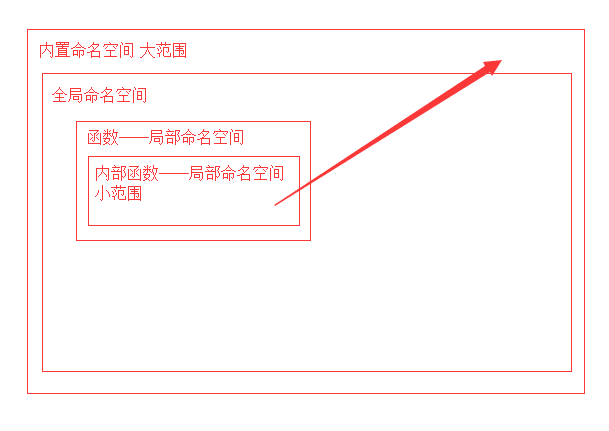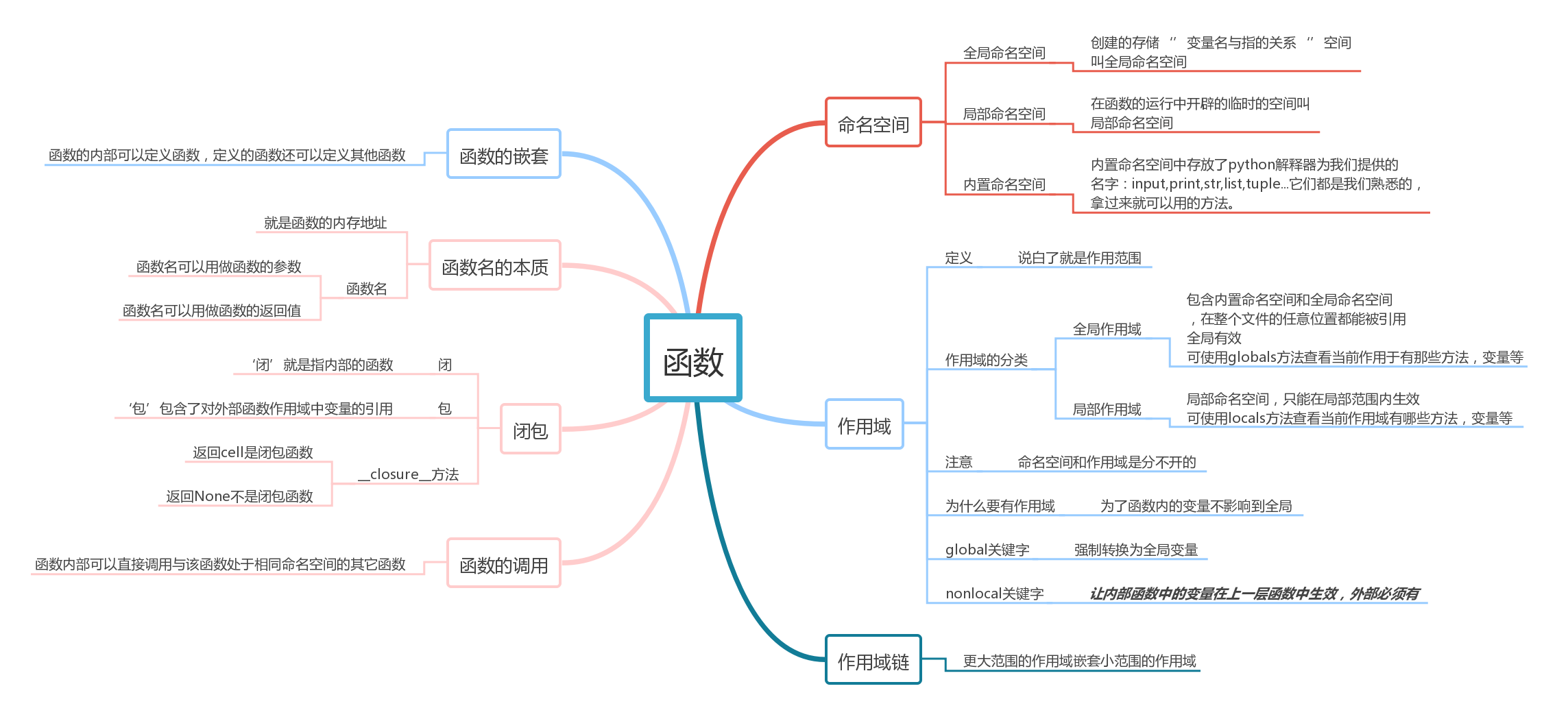您现在的位置是:主页 > news > wordpress数据爬虫/株洲企业seo优化
wordpress数据爬虫/株洲企业seo优化
![]() admin2025/5/24 21:33:08【news】
admin2025/5/24 21:33:08【news】
简介wordpress数据爬虫,株洲企业seo优化,12333网上服务大厅,关于设计网站1.三元运算 if条件成立的结果 if 条件 else 条件不成立的结果 例如: a20 b10 ca if a>b else b print(c) 2.命名空间 全局命名空间:创建的存储“变量名与值的关系”的空间叫做全局命名空间 局部命名空间:在函数的运行中开辟的临时的空间叫…
1.三元运算
if条件成立的结果 if 条件 else 条件不成立的结果
例如:
a=20
b=10
c=a if a>b else b
print(c)
2.命名空间
全局命名空间:创建的存储“变量名与值的关系”的空间叫做全局命名空间
局部命名空间:在函数的运行中开辟的临时的空间叫做局部命名空间
内置命名空间:内置命名空间中存放了python解释器为我们提供的名字:input,print,str,list,tuple...它们都是我们熟悉的,拿过来就可以用的方法。

三种命名空间之间的加载顺序和取值顺序:
加载顺序:内置(程序运行前加载)-->全局(从上到下顺序加载进来的)-->局部(调用的时候加载)--->内置
取值:在局部调用:局部命名空间--->全局命名空间--->内置命名空间
站在全局范围找:全局----内置----局部
使用:
全局不能使用局部的
局部的可以使用全局的
3.作用域:就是作用范围
1.命名空间和作用域是分不开的
2.作用域分为两种:
全局作用域:全局命名空间与内置命名空间的名字都属于全局范围
在整个文件的任意位置都能被引用,全局有效
局部作用域:局部命名空间,只能在局部范围内生效
3.站在全局看:
使用名字的时候:如果全局有,用全局的
如果全局没有,用内置的
4.为什么要有作用域?
为了函数内的变量不会影响到全局
5.globals方法:查看全局作用域的名字【print(globals())】
locals方法:查看局部作用域的名字【print(locals())】


1 def func():2 a = 12
3 b = 20
4 print(locals())5 print(globals())6
7 func()
在局部调用locals()和globals()
站在全局看,globals is locals
global关键字:强制转换为全局变量


1 # x=1
2 # def foo():3 # globalx #强制转换x为全局变量4 # x=10000000000
5 # print(x)6 # foo()7 # print(x)8 # 这个方法尽量能少用就少用
global
nonlocal让内部函数中的变量在上一层函数中生效,外部必须有


1 # x=1
2 # def f1():3 # x=2
4 # def f2():5 # # x=3
6 # def f3():7 # # globalx#修改全局的8 # nonlocal x#修改局部的(当用nonlocal时,修改x=3为x=100000000,当x=3不存在时,修改x=2为100000000 )9 # # 必须在函数内部10 # x=10000000000
11 # f3()12 # print('f2内的打印',x)13 # f2()14 # print('f1内的打印', x)15 # f1()16 # # print(x)
nonlocal
4.函数的嵌套定义


1 def animal():2 def tiger():3 print('nark')4 print('eat')5 tiger()6 animal()
函数的嵌套定义
5.作用域链


1 x=1
2 def heihei():3 x='h'
4 def inner():5 x='il'
6 def inner2():7 print(x)8 inner2()9 inner()10 heihei()
函数的作用域链
6.函数名的本质:就是函数的内存地址


1 def func():2 print('func')3 print(func)#指向了函数的内存地址
函数的本质
7.函数名可以用做函数的参数



1 def func():2 print('func')3
4 def func2(f):5 f()6 print('func2')7 func2(func)
函数名可以用作参数
函数名可以作为函数的返回值

return说明1
def func():
def func2():
print('func2')returnfunc2
f2=func()
f2()
#func2=func()
#func2()
2.
def f1(x):
print(x)
return '123'
def f2():
ret = f1('s') #f2调用f1函数
print(ret)
f2()
3.
def func():
def func2():
return 'a'
return func2 #函数名作为返回值
func2=func()
print(func2())
8.闭包:
闭包:1.闭 :内部的函数
2.包 :包含了对外部函数作用域中变量的引用
def hei():
x=20
def inner():
x=10 #如果x定义了,他就用自己的了,就实现不了闭包
print(x)


1 # 闭包的常用形式:2 def hei():3 x=20
4 def inner():5 '''闭包函数'''
6 print(x)7 return inner()
闭包函数的常见形式
判断闭包函数的方法:__closure__


1 #输出的__closure__有cell元素 :是闭包函数2 def func():3 name = 'eva'
4 def inner():5 print(name)6 print(inner.__closure__)7 returninner8
9 f =func()10 f()11
12
13 #输出的__closure__为None :不是闭包函数14 name = 'egon'
15 def func2():16 def inner():17 print(name)18 print(inner.__closure__)19 returninner20
21 f2 =func2()22 f2()
View Code
闭包获取网络应用


1 #from urllib.request import urlopen
2 #def index(url):
3 #def inner():
4 #return urlopen(url).read()
5 #return inner
6 #u='http://www.cnblogs.com/Eva-J/articles/7156261.html#_label1'
7 #get = index(u)
8 #print(get())
View Code
9.总结
作用域:小范围的可以用大范围的,但是大范围的不能用小范围的
范围从大到小(图)

如果在小范围内,如果要用一个变量,是当前这个小范围有的,就用自己的
如果在小范围内没有,就用上一级的,上一级没有的,就用上上级的,以此类推
如果都没有,报错
10.思维导图









